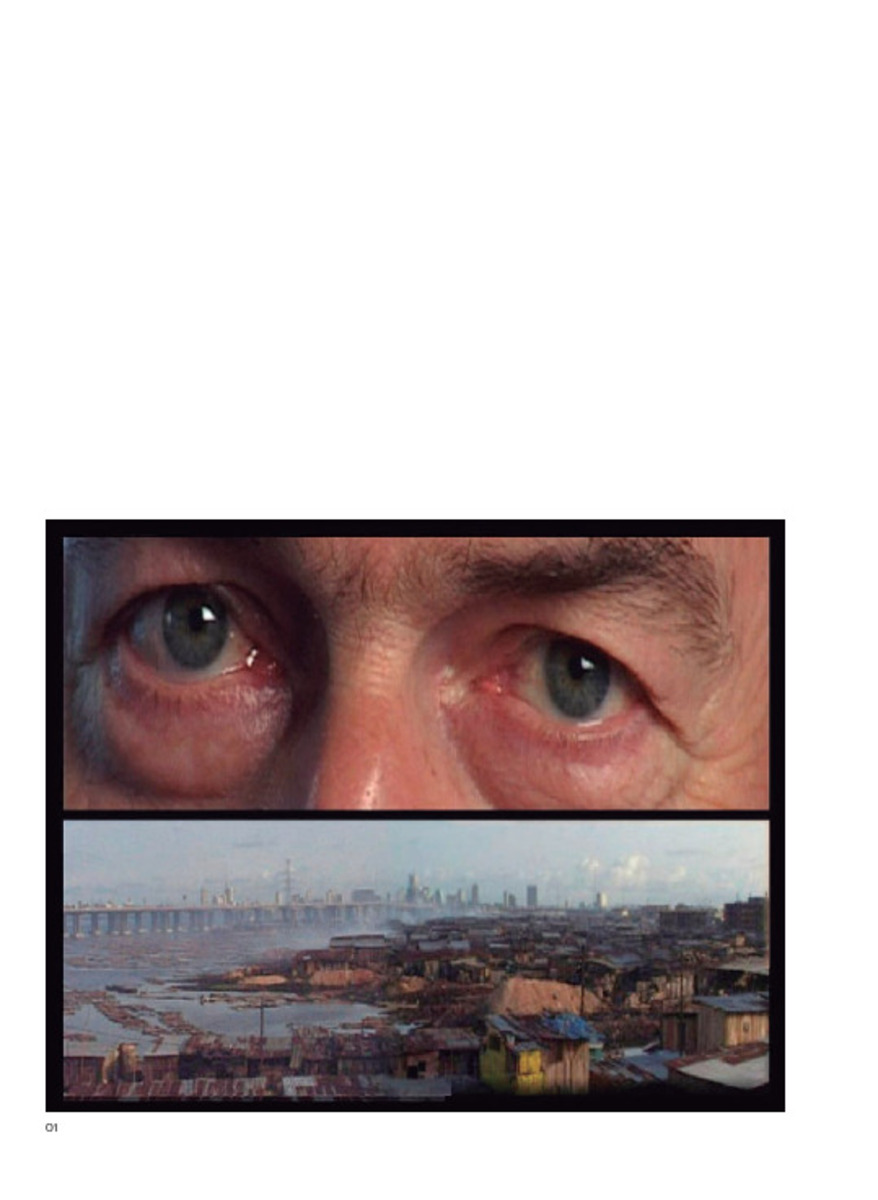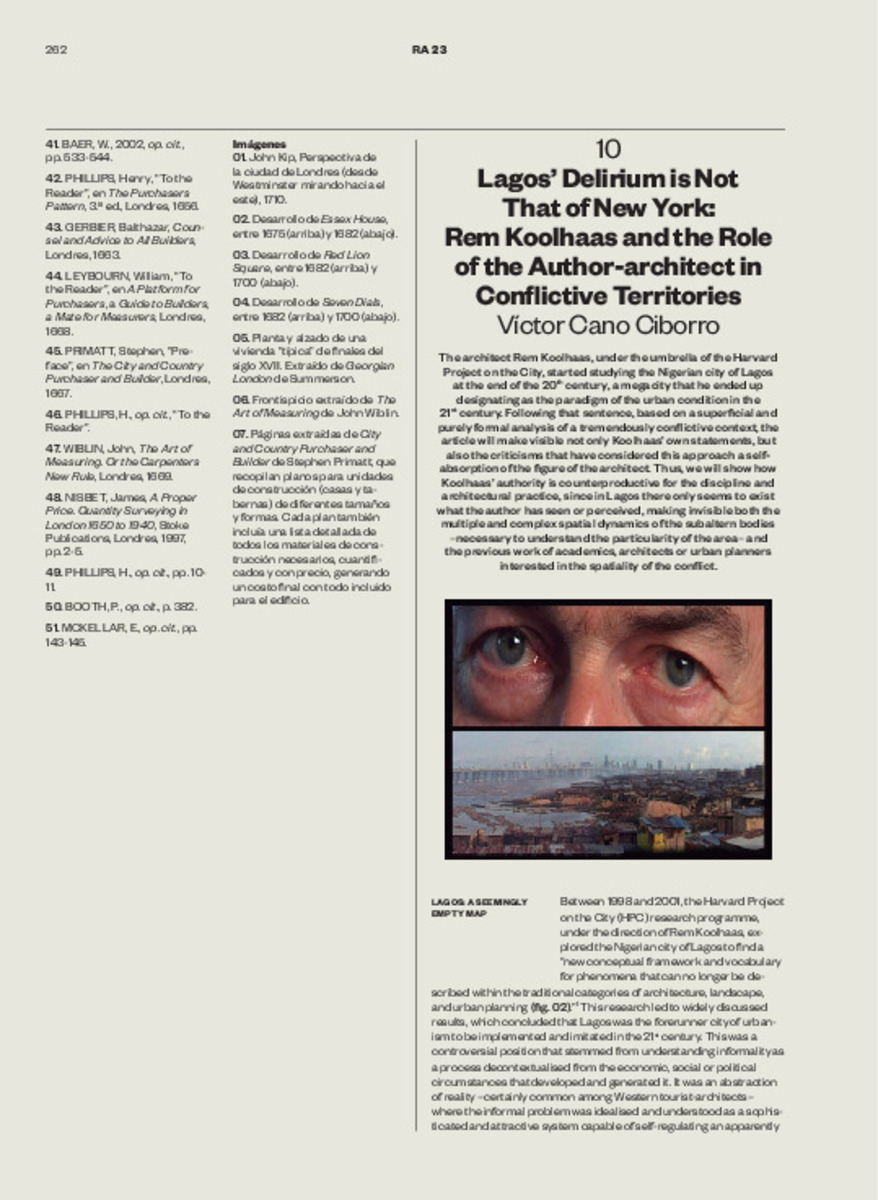Full metadata record
| DC Field | Value | Language |
|---|---|---|
| dc.creator | Cano-Ciborro, V. (Victor) | - |
| dc.date.accessioned | 2021-11-03 | - |
| dc.date.accessioned | 2021-11-09T13:14:45Z | - |
| dc.date.available | 2021-11-09T13:14:45Z | - |
| dc.date.issued | 2021 | - |
| dc.identifier.citation | Cano-Ciborro, V. (Victor). "El delirio de Lagos no es el de Nueva York: Rem Koolhaas y el protagonismo del autor-arquitecto en territorios conflictivos". Ra. Revista de Arquitectura. 23, 2021, 162 - 173 | es |
| dc.identifier.issn | 1138-5596 | - |
| dc.identifier.uri | https://hdl.handle.net/10171/62492 | - |
| dc.description.abstract | The architect Rem Koolhaas, under the umbrella of the Harvard Project on the City, started studying the Nigerian city of Lagos at the end of the 20th century, a megacity that he ended up designating as the paradigm of the urban condition in the 21st century. Following that sentence, based on a superficial and purely formal analysis of a tremendously conflictive context, the article will make visible not only Koolhaas’ own statements, but also the criticisms that have considered this approach a selfabsorption of the figure of the architect. Thus, we will show how Koolhaas’ authority is counterproductive for the discipline and architectural practice, since in Lagos there only seems to exist what the author has seen or perceived, making invisible both the multiple and complex spatial dynamics of the subaltern bodies –necessary to understand the particularity of the area– and the previous work of academics, architects or urban planners interested in the spatiality of the conflict. | en_US |
| dc.description.abstract | El arquitecto Rem Koolhaas, bajo el amparo de Harvard Project on the City, comenzó a estudiar a finales del siglo XX la ciudad nigeriana de Lagos, megaurbe que acabó designando como paradigma de la condición urbana en el siglo XXI. Ante semejante sentencia, basada en el análisis superficial y puramente formal de un contexto tremendamente conflictivo, el artículo hará visible ya no sólo las afirmaciones del propio Koolhaas, sino las críticas que han considerado dicha aproximación un ensimismamiento de la figura del arquitecto. Así, evidenciaremos cómo la autoridad de Koolhaas resulta contraproducente para la disciplina y práctica arquitectónica, ya que en Lagos sólo parece existir lo que el autor ha visto o percibido, invisibilizando tanto las múltiples y complejas dinámicas espaciales protagonizadas por los cuerpos subalternos –necesarias para entender la particularidad de la zona– como los trabajos previos de académicos, arquitectos o urbanistas interesados en la espacialidad del conflicto. | es_ES |
| dc.language.iso | spa | - |
| dc.publisher | Servicio de Publicaciones de la Universidad de Navarra | es_ES |
| dc.rights | info:eu-repo/semantics/openAccess | es_ES |
| dc.subject | Koolhaas | - |
| dc.subject | Lagos | - |
| dc.subject | informalidad | - |
| dc.subject | conflicto | - |
| dc.subject | fuerzas | - |
| dc.title | El delirio de Lagos no es el de Nueva York: Rem Koolhaas y el protagonismo del autor-arquitecto en territorios conflictivos | es_ES |
| dc.title.alternative | Lagos’ Delirium is Not That of New York: Rem Koolhaas and the Role of the Author-architect in Conflictive Territories | en_US |
| dc.type | info:eu-repo/semantics/article | es_ES |
| dc.identifier.doi | 10.15581/014.23.162-173 | - |
| dadun.citation.endingPage | 173 | - |
| dadun.citation.publicationName | Ra. Revista de Arquitectura | - |
| dadun.citation.startingPage | 162 | - |
| dadun.citation.volume | 23 | - |
Statistics and impact
Items in Dadun are protected by copyright, with all rights reserved, unless otherwise indicated.







